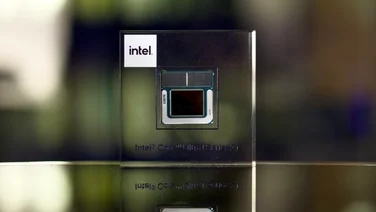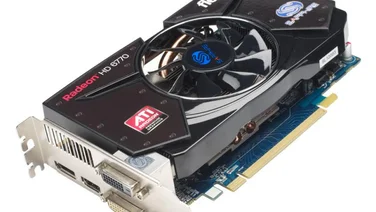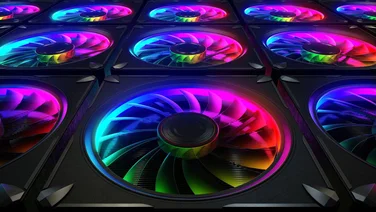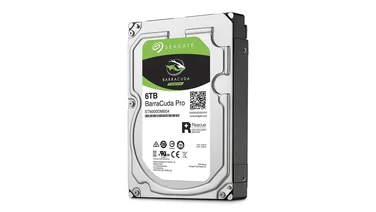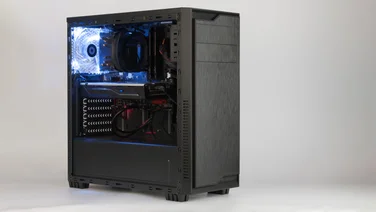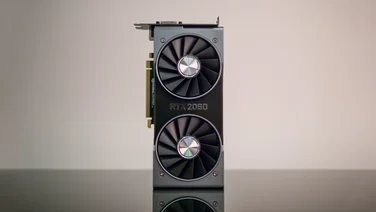To help us provide you with free impartial advice, we may earn a commission if you buy through links on our site. Learn more
- How to choose the best CPU for you
- The best CPUs to buy in 2020
- 1. AMD Ryzen 3 2200G: The best budget CPU – superb performance on a shoestring budget
- 2. AMD Ryzen 5 3600X: The best mid-range CPU
- 3. AMD Ryzen 7 3700X: An exceptional octa-core processor
- 4. Intel Core i5-10600K: The best CPU for gaming
- 5. AMD Ryzen 9 3900X: A 12-core juggernaut
- 6. AMD Athlon 3000G: An overclockable chip that costs next to nothing

If you’re choosing a new PC – or even building one yourself – it’s vital to pick the right processor. If your CPU is too basic for your requirements, you’re dooming yourself to sluggish performance. If you splash out on high-end power you don’t need, that’s wasted money that could otherwise go towards a fast SSD, a beefy graphics card or a luxurious display.
Here, you’ll find our pick of the best desktop CPUs available today. Note that we’ve stayed away from mobile processors as that’s a different market. When buying a laptop you’re typically restricted to one or two CPU options, anyway, while performance must be balanced against other issues such as weight and battery life.
In the desktop market, things are much more flexible; within reason, you can choose whichever processor you want. Here’s our pick of the best contenders for all needs and any budget, so you can buy in confidence and enjoy a slick computing experience.
How to choose the best CPU for you
Is Intel better than AMD?
Not always. In fact, depending on your workload, AMD could be the better choice. Before AMD introduced its Ryzen processors in 2017, Intel had a clear lead at every level. Its CPUs were more powerful – and much more popular – than AMD’s, and the only reason to buy an AMD was to cut your costs.
However, AMD’s Ryzen processors have turned that situation around. Now in their third generation, they’re powerful CPUs at a tempting price, arguably offering more bang for your buck when running two or more complex applications at once. While there are areas where Intel still comes out on top, such as high-end gaming, AMD provides some excellent alternatives for every need and at every price point.
What sort of motherboard do I need?
If you’ve chosen an AMD Ryzen processor, you need an AM4 motherboard, except for the premium Ryzen Threadripper chips that need the larger TR4 socket. There are plenty to choose from, using different onboard chipsets to provide different features (such as varying numbers of PCI-E and USB ports). Most Ryzen chips will work with most AMD chipsets, with a few exceptions: the latest X570 chipset, for example, isn’t compatible with 1st-gen Ryzen CPUs, while third-generation CPUs are only natively compatible with the X570, X470 and B450 chipsets; some X370 and B350 motherboards will work after a BIOS update, but A320 boards won’t work with the new chips at all.
For Intel’s most recent, 10th-gen Core i3, i5, i7 and i9 processors, you’ll need a motherboard with the LGA 1200 socket. This partly simplifies things, as while there are (again) multiple chipsets with different features, as long as the socket fits the CPU should work. This is in contrast to previous Intel generations, which usually shared the LGA 1151 socket but used generation-locked chipsets.
How many cores do I need?
The truth is, it depends what you want to do. For lightweight desktop computing, a dual-core CPU will still just about do, particularly if it supports some form of hyper-threading, in which the CPU uses clever processing and scheduling techniques to simulate having twice as many cores as it actually has. Four cores will help things run more smoothly when you have a lot of applications or browser tabs open, while with six cores or eight cores you’re equipped for heavyweight jobs such as video editing and 3D rendering.
In that case, it’s normally a case of the more cores and the more threads (or strings of instructions they can run simultaneously) the better. This is why you will see AMD’s eight-core and 16-thread processors outperform some of Intel’s six-core or eight-core processors, even though the latter generally run at higher speeds.
What clock speed should I look for?
As a rule, higher is better – but advertised speeds can be deceptive because modern CPUs dynamically adjust their own clock rates to suit the workload. In general, the highest “Turbo” speed is more important than the base frequency, as this is the speed the CPU will try to boost to when running more demanding tasks.
In many cases you can overclock the processor to reach even faster speeds – this applies to all AMD Ryzen models, and all Intel processors with a “K” suffix. Be warned, though: to make this work, you might have to turn up the motherboard’s core voltage (“VCORE”). The faster you go, the higher the likelihood that your CPU will overheat and crash. This shouldn’t damage your computer, but it’s annoying. You can reduce the risk by investing in a high-end air cooler, or even a sophisticated water-cooling system.
What about integrated graphics?
All of Intel’s Core processors come with built-in GPUs. They’re not powerful enough to play the latest games with maximum detail settings – you’ll need a dedicated graphics card for that – but they’re fine for a spot of Minecraft or for watching high-definition video. If you’re looking for a cheap, simple system, that could swing it for Intel. AMD has a small number of chips with built-in graphics (look for the ‘G’ suffix identifying them), but most of its CPUs don’t have any built-in graphical capabilities, and require a standalone graphics card.
Anything else I need to look out for?
CPUs are complex things, and there are plenty of other technical factors that affect performance, including how much cache RAM is built into the chip and what sort of lithography process is used to make the chips. However, their impact is much less significant than overall speed and core count: if you focus on those key factors, you won’t go far wrong.
The best CPUs to buy in 2020
1. AMD Ryzen 3 2200G: The best budget CPU – superb performance on a shoestring budget

Price: £96 | Buy now from Novatech
The old Ryzen 3 1200 was an excellent entry-level CPU, and the Ryzen 3 2200G makes things even better with the addition of integrated Radeon RX Vega 8 graphics. If you’re planning a basic budget build, this allows you to save the cash you’d otherwise need to spend on a dedicated graphics card.
There’s no simultaneous multithreading (the technique AMD uses to add virtual cores to its higher-end chips), so the four physical cores are all you get. That’s more enough for the money, though, and clock speeds have been given a significant boost up from the Ryzen 3 1200: a stock speed of 3.5GHz with a 3.7GHz Turbo.
As per usual with Ryzen, you can also overclock it, unlike the Core i3-10100 – the closest Intel alternative. AMD also includes an air cooler in the Ryzen 3 2200G’s box, though in fairness you can get this with the Core i3-10100 as well.
As for the integrated graphics, don’t expect miracles: in the fairly undemanding Dirt: Showdown, running at 1,920×1,080 with Ultra settings, we just scraped a playable 30fps. Still, that’s better than what you’d get from the Intel equivalent, and even if you don’t care for games, it’s handy that you can output video straight from the CPU.
Key specs – Base frequency: 3.5GHz; Turbo Frequency: 3.7GHz; Cores/Threads: 4/4; Socket: AM4; Thermal Design Power (TDP): 65W; Integrated graphics: AMD Vega 8
2. AMD Ryzen 5 3600X: The best mid-range CPU

Price: £214 | Buy now from Amazon
AMD’s Ryzen CPUs have always been great for juggling multiple applications, or powering through heavily multithreaded software like video and photo editing suites. They’ve been less exemplary at gaming, where Intel’s preference for single-core speeds has tended to produce better results.
Although the rival Core i5-10600K maintains this gaming edge for Intel, the Ryzen 5 3600X is superior in just about everything else. Besides a much lower price and better power efficiency, you’re getting the potent multitasking performance that Ryzen is known for: it scored 267 overall in our benchmarks, which was 19 points higher than the Core 10600K.
Besides, it’s not actually bad when running games: if anything, it represents a massive improvement on the first and second Ryzen generations. As a result, Intel’s chip might be more specialised, but this is a better mid-range CPU overall.
Key specs – Base frequency: 3.8GHz; Turbo Frequency: 4.4GHz, Cores/Threads: 6/12, Socket: AM4, Thermal Design Power (TDP): 95W; Integrated graphics: None
3. AMD Ryzen 7 3700X: An exceptional octa-core processor

Price: £330 | Buy now from Amazon
The affordability of the Ryzen 5 3600X makes it more likely to find widespread success, but the higher-end Ryzen 7 3700X is also a superb balance of power and pricing. For less than the equivalent Intel Core i7-9700K, the 3700X provides more threads, lower power consumption – its TDP is an almost unbelievable 65W – and superior performance in both games and far more serious software.
As with the 3600X (and the rest of the 3000-series), single-core performance is up on the previous generation, so the 3700X can unlock the potential of dedicated GPUs much more effectively than the Ryzen 7 2700X. In our 4K benchmark tests, it also scored a blazing 389 in the multitasking test and 330 overall. You’d need to spend almost twice as much on the Core i9-10900K to get better overall performance from Intel’s lineup.
The Ryzen 9 3900X (below) delivers even more multithreading muscle, although single-threaded performance is more in line with the 3700X, so it’s better to save money with the latter if you’re building a general home PC and not a workstation alternative.
Key specs – Base frequency: 3.6GHz; Turbo Frequency: 4.4GHz; Cores/Threads: 8/16; Socket: AM4; Thermal Design Power (TDP): 65W; Integrated graphics: None
4. Intel Core i5-10600K: The best CPU for gaming

Price: £247 | Buy now from Amazon
As we said above, there are a few reasons to be suspicious of the Core i5-10600K: it’s more expensive than the Ryzen 5 3600X, isn’t as good at multitasking despite equal core and thread counts, and with a 125W TDP it absolutely chugs power by mid-range standards.
Why, then, would you ever choose it over the Ryzen? For one, very specific purpose: gaming. For its price, the Core i5-10600K is a peerless partner to even high-end GPUs; it’s just as good at preventing bottlenecking (whereby the CPU can’t keep up with the graphics card) as a lot of top-end CPUs. In our gaming benchmarks it even outperformed the Core i9-9900K, which is the pinnacle of Intel’s 9th generation.
If you’re building a gaming PC, then, and are unlikely to need the Ryzen 5’s extra multicore muscle for things like media editing, then by all means go for the Core i5-10600K. It overclocks very smoothly, too.
Key specs – Base frequency: 4.1GHz; Turbo Frequency: 4.8GHz; Cores/Threads: 6/12; Socket: LGA 1200; Thermal Design Power (TDP): 125W; Integrated graphics: Intel UHD Graphics 630
5. AMD Ryzen 9 3900X: A 12-core juggernaut

Price: £394 | Buy now from Amazon
The last couple of CPU generations, from both major manufacturers, have given us some impressively ambitious high-end chips that aim for enthusiast-grade performance while still being compatible with mainstream sockets and chipsets. Of these, the Ryzen 9 3900X remains the best.
First and foremost, it’s £149 less than the equivalent Intel Core i9-10900K, and despite Intel’s chip being newer as well as pricier, the 3900X comfortably beats it in the most taxing conditions. In our tests, the 3900X scored 422 overall to the i9’s 395, and its multitasking score of 523 to the Intel’s 468 proves it’s more suited to heavy multicore use.
The 3900X’s 12 cores and 24 threads give it a serious advantage for productivity, and it’s pretty nimble for gaming too – although if playing games is your priority, the Ryzen 7 3700X or Intel Core i5-10600K will save you some money. We also had trouble overclocking the 3900X beyond its natural boost speeds, although we believe that’s partly down to these frequencies being set so high in the first place.
Key specs – Base frequency: 3.8GHz; Turbo Frequency: 4.6GHz; Cores/Threads: 12/24; Socket: AM4; Thermal Design Power (TDP): 105W; Integrated graphics: None
6. AMD Athlon 3000G: An overclockable chip that costs next to nothing

Price: £52 | Buy now from Amazon
In theory there are a few reasons to look past the Athlon 3000G: it’s only a dual-core CPU, and AMD already has a great budget chip in the Ryzen 3 2200G. Even so, the Athlon is cheaper still, and definitely has the performance and features to make it a viable choice for an entry-level PC system.
Simultaneous Multithreading support means the Athlon 3000G can leverage four threads in total, so you don’t just have to rely on the two physical cores, and the integrated Vega 3 GPU is enough for basic 720p gaming. Best of all is its overclocking capability, an extremely rare quality among such cheap CPUs; we easily pushed the 3.5GHz base speed to 3.8GHz, on air cooling and with no voltage tweaks required.
We’d still recommend stretching to the Ryzen 3 2200G if you can afford it, but for simple browsing and office software, the Athlon 3000G supplies more than enough horsepower – as well as the opportunity to wring out some more.
Key specs – Base frequency: 3.5GHz; Turbo Frequency: N/A; Cores/Threads: 2/4; Socket: AM4; Thermal Design Power (TDP): 35W; Integrated graphics: AMD Radeon Vega 3






